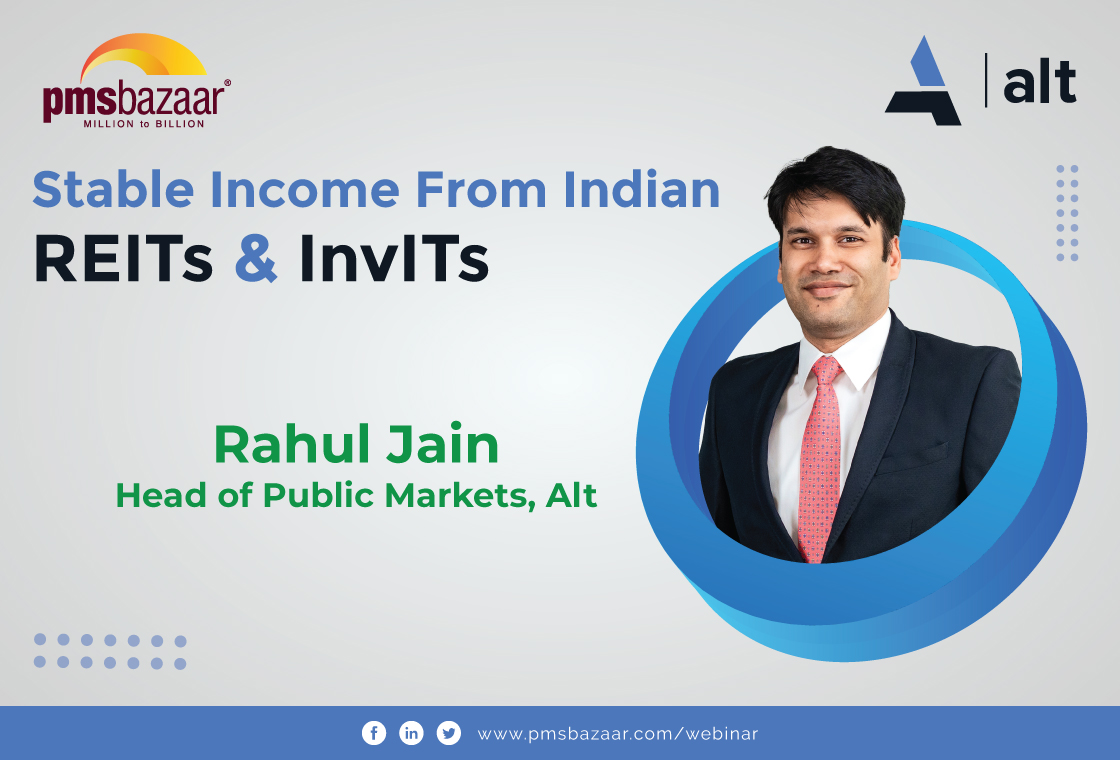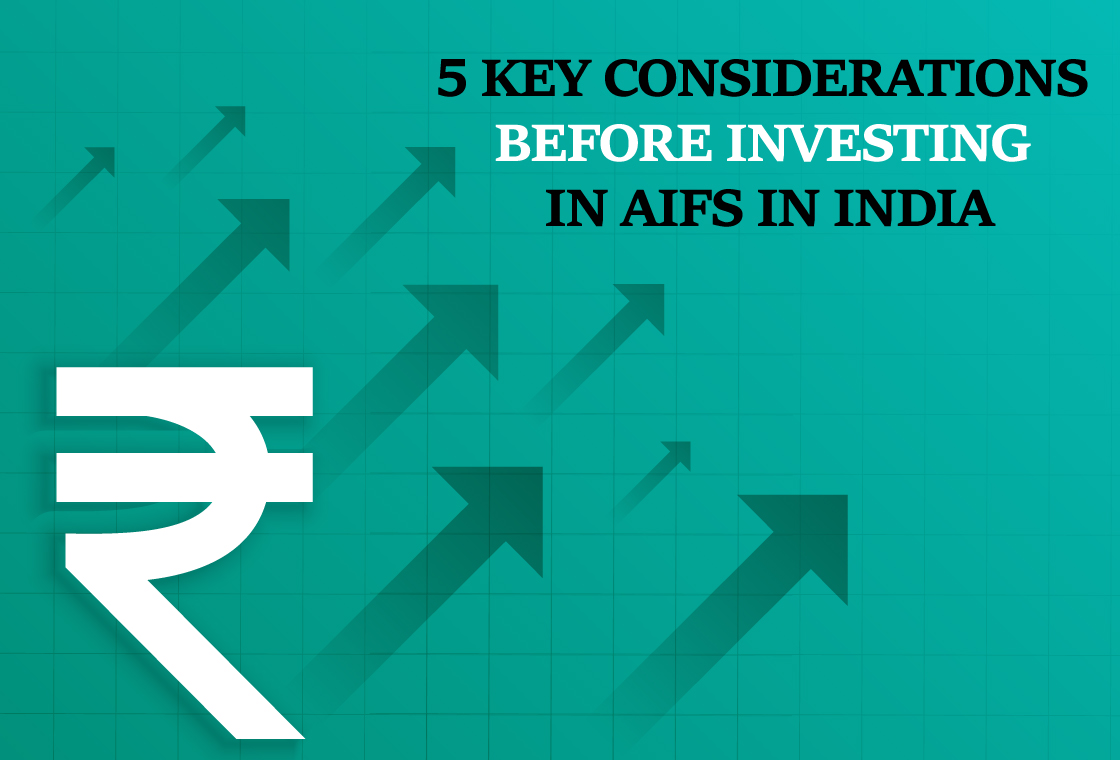The stock market in 2022 has been one of the most volatile markets on record. The S&P 500 has seen a near 20% drop so far YTD, and the Nasdaq 100 has seen almost a 30% drop YTD. Markets are reeling under selling pressure due to the confluence of global negatives like the Ukraine war, Rising rates, commodity inflation, Covid resurgence in China, supply disruption, and geopolitical conflicts. With this volatility, how do you balance risk and return? This blog shall cover the relationship between market volatility, and return-risk balance, which will help you make better investment decisions.

Many factors have been attributed to the recent volatility. The standard advice is that for most long-term investors, the best way to deal with volatile markets is to remain calm and stay the course. Staying the course, however, is predicated on having a well-diversified and sound strategy, to begin with.
Based on this, we conducted a webinar on the topic “Balancing Risk and Return in a Volatile Market” with Mr. Anil Rego, Founder & CEO of Right Horizons. In this blog, we have covered the valuable insights & perspectives he shared in the webinar.
Key insights covered in this webinar blog are -
- Fall across the market and factors driving the fall.
- How FII flows have been impacted in 202
- Market Cycle
- Concern about NASDAQ
- The USD 5 trillion economy
1. Fall across Market and Factors Driving the Fall
Indian equity markets have been through their share of volatility in the past few months. But the worst is not behind them, as per this equity market expert. It may experience one more steep fall, but it could be the last such in the near future.
The last market falls and how it has been in terms of the NIFTY, NASDAQ, and S&P 500. The NIFTY fell by 15%, while the S&P 500 fell by 21%. This is one of the few times that the S&P 500 fell more than the nifty. Interestingly, the NASDAQ, which everyone was so bullish about, suddenly fell by 31%.
India’s retail inflation rose to 7.79%, well above the RBI inflation level target of 4%. Indian benchmark index Sensex has fallen around 8% in 2022 so far. This fall is three times less than the US markets, which tumbled steeply at 26% – making Indian markets one of the better-performing equity markets in the world. One of the rare times is when you have seen US inflation is higher than Indian inflation.
According to Mr. Anil Rego, “What this means is probably there are more to come, and that's the bad news in some form. However, a positive aspect of this is that markets frequently discount the future, which is good news. Considering inflation has been continuously rising, all central banks and governments will give precedence to inflation over growth in the economy.”
Inflation has been rising significantly over the past ten years, which is a cause for concern. As a result, central banks have had to act, but sometimes the markets don't give them a chance because they have to decide whether to control inflation or to have an impact on growth.
The uncertainty amid the ongoing geopolitical crisis had caused a spike in inflation across major economies of the world. All this at a time when countries were gradually recovering from the slump caused by the Covid-19 pandemic in the last 2 years. The escalating crisis in Ukraine dragged stock markets lower across the world.
2. How the FII Flows Have Been Impacted in 2022 -
The sell-off by foreign institutional investors (FIIs) from the Indian stock markets this year is the talk of the town as it has hampered the market sentiment and sucked out the liquidity. In 2022, foreign investors have pulled out ₹1.5 lakh crore from the Indian markets including equity, debt, and hybrid assets. During the same time, Sensex slipped 9%. The sell-off in 2022 is more aggressive than last year as FIIs had invested ₹50,088 crores in Indian markets in 2021.
Since FIIs are among large investors in emerging markets like India since they have access to abundant capital, a massive FII sell-off has the potential to spook investors. However, domestic institutional investors (DIIs) have saved the sinking boat by being constant investors. Domestic institutional investors are institutions like insurance companies, mutual fund houses, pension funds, or provident funds.
The US central bank has been raising interest rates to control inflation caused by the disruptions in the supply chain due to the Russia-Ukraine war, after effects of Omicron, and other factors resulting in a surge in inflation and economic slowdown.
A rise in the US interest rates does not bode well for the Indian markets as foreign investors pull out money from emerging and risky markets like India and invest in safe and secure markets in the US-like debt funds.
3. Market Cycles
Understanding the market cycle is important for investors. It helps them decide when to invest and when to exit the market, as it directly impacts everything in the investment world, such as stocks, bonds, returns, and profits.

Expansion or Rising
In this phase, there is a significant increase in positive economic indicators such as income, employment, output, profits, demand, wages, and supply of services and goods. During this stage, the frequency of money supply is high, debtors pay their off loans before deadlines, and investment is also high. This process continues while economic conditions are suitable for expansion.
Maturing
At this stage, the economy may reach a high point or peak, which is the next stage of the economic cycle. At this saturation point, the maximum limit of growth is achieved. The economic indicators discussed above are at their highest and do not grow. Prices are at their highest and consumers reconstruct their budget at this time. Moreover, this stage is a reversal point in the economic growth trend.
After the peak phase, comes the contraction stage when demand for services and goods starts decreasing rapidly. Initially, producers don’t notice the declining demand and continue producing, resulting in a surplus supply in the market and low demand. Prices and other economic indicators like income, employment, wages, and output start to fall consequently.
Declining (recession)
The economy hits its bottom at this stage. This is the culmination point when the decline in demand for goods/services reaches its lowest. It is accompanied by significant depletion of national expenditure and income, the economy shrinks, credit bottoms out, profit contracts, interest rates fall, initial stimulus by government, and Capex dries up, among others
Expansion Starts Again
After the trough phase, the economy shifts into the recovery stage. In this stage, the economy experiences a turnaround and begins to recover from the fall. Demand starts rising due to low prices, and supply increases in the market. Further, the population starts looking at investments positively, and employment rises. During this phase, depreciated capital is replaced, resulting in new investments in production. This phase continues until the economy reaches steady growth levels.
Considering the above, Mr. Anil Rego says, “India has been slightly diverging from the global economy. When compared to the US which is more in the declining phase, India is in an early bottoming out phase and declining phase. India should hopefully experience a quicker and less painful decline than global markets, but you must remember that you cannot view India in isolation since it is a component of the entire global economy, and if the global economy, especially the US and other markets the flow gets affected, especially FIIs, then India will also be affected.”
4. Concern about NASDAQ
 The NASDAQ has come down to a 200 weak moving average and the last time the NASDAQ came down was during the Covid peak period. Now the concern is when will NASDAQ bounce back? We have seen in an earlier period 2000-001, where NASDAQ saw a large fall after which NASDAQ moved very sharply from 800-4800.
The NASDAQ has come down to a 200 weak moving average and the last time the NASDAQ came down was during the Covid peak period. Now the concern is when will NASDAQ bounce back? We have seen in an earlier period 2000-001, where NASDAQ saw a large fall after which NASDAQ moved very sharply from 800-4800. 
Get access to rich data and analytics of PMS & AIF by subscribing to us. Join the 40000+ investors & experts now: Subscribe NOW
Recent Blogs
.jpg)
Passively Active Investing — A Modern Investor’s Lens on ETF-Based PMS
PMS Bazaar recently organized a webinar titled “Passively Active Investing — A Modern Investor’s Lens on ETF-Based PMS,” which featured Mr. Karan Bhatia, Co-Founder and Co-Fund Manager , Pricebridge Honeycomb ETF PMs. This blog covers the important points shared in this insightful webinar.

Spot the Trouble: Red Flags in Equity Investment Analysis
PMS Bazaar recently organized a webinar titled “Spot the Trouble: Red Flags in Equity Investment Analysis,” which featured Mr. Arpit Shah, Co-Founder & Director, Care Portfolio Managers. This blog covers the important points shared in this insightful webinar.

Long-Only AIFs Rebound Sharply in October; Long-Short Strategies Lag Despite Lower Volatility
106 long-only AIFs averaged 3.68% vs 32 long-short AIFs at 2.7%; only 24–31% of funds beat key indices

Markets log strongest monthly gains in 7 months; PMS performance turns near-uniform in October
Nifty 50 TRI gained 4.62%, BSE 500 TRI rose 4.27%; 415 of 427 equity PMSes ended positive

How SMEs are Shaping India’s Investment Landscape?
PMS Bazaar recently organized a webinar titled “How SMEs are Shaping India’s Investment Landscape?” which featured Mr. Shrikant Goyal, Fund Manager, GetFive Opportunity Fund.

Stable Income from Indian REITs and InvITs
PMS Bazaar recently organized a webinar titled “Stable Income from Indian REITs and InvITs,” which featured Mr. Rahul Jain, Head of Public Markets, Alt.

5 Key Considerations Before Investing in AIFs in India
Alternative Investment Funds (AIFs) have emerged as a compelling option for sophisticated investors seeking diversification and potentially superior returns. But venturing into AIFs requires a clear understanding of their unique characteristics that go beyond simply knowing what they are and their categories.

How AIF can help in diversification?
Traditionally, Indian investors have relied on a mix of stocks and bonds to build their wealth. While this approach offers diversification, it can still leave your portfolio vulnerable to market fluctuations. Enter Alternative Investment Funds (AIFs), a dynamic asset class gaining traction for its ability to unlock diversification beyond the realm of conventional options.

